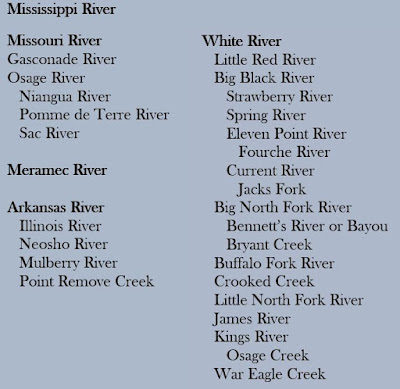In the 1800s, courthouse fires notoriously destroyed valuable county records across the United States. These fiery disasters generally give the moniker of "Burned Counties." This is the case in Baxter County, Arkansas. Yet, circumstances are different for Baxter County today. We are grateful to Wayne & Carolyn Camp for their care and donation of six volumes of Baxter County Land Transcriptions Records from 1857 - 1899. Newly discovered records thought destroyed or lost will shed light on the history we assumed ascended in the flames of 1890. We are looking forward to seeing familiar and unknown names of our region's pioneers to come to light. This will be a great year.
 |
| Vincent S. Anderson with Wayne & Carolyn Camp. 1 |
The Story
In 1880, the Baxter County Building Commissioners contracted to build a new courthouse on the square in Mountain Home. The new courthouse endured almost a decade, and the wooden structure burned in February of 1890. Many of the county's valuable records burned or
became water- and smoke-damaged, and it was not feasible for the records
to be maintained within the county's collection. Seven months later,
the Baxter County Quorum Court levied a tax to construct a new
courthouse.
After
the fire in 1890, County Clerk William F. Eatman immediately began the task of transcribing the damaged documents by hand. Eatman completed his task and his records were certified a little over a decade after the fire. Eatman served as Baxter County Circuit Clerk for 21 years, and he owned the Baxter County Abstracting Company of Mountain Home.
 |
| Wayne & Carolyn Camp Donation. 2 |
The
damaged Baxter County Land Transactions date back to 1857. The end result of Eatman's 10-year task produced a certified six-volume set of land records. Unfortunately, the land transcriptions were never placed back into Baxter County's possession.
 |
| New 1890 two-story brick, gothic-style Courthouse. 3 |
Over
the decades, Wayne and Carolyn Camp came into possession of these historical documents. In December of 2019, Wayne and Carolyn Camp donated the records to the Baxter County Library, and these records are currently in the Library's digitization project. It is estimated the project will take three months to complete. Once the records are
digitized, the six volumes will be given to the Baxter County Clerk's
Office and placed in the county vault. Then, the Baxter County Library will initiate the next phase of the project, which will be to transcribe the handwritten records.
 |
| Wayne & Carolyn Camp Donation. 4 |
Enjoy your Ozarks' History.
References.
1. Baker, Chase. "Vincent S. Anderson with Wayne & Carolyn Camp." Baxter County Library. Accessed
January 30, 2020.
2. Baker, Chase. "Wayne & Carolyn Camp Donation." Baxter County Library. Accessed
January 30, 2020.
3. Government, Baxter County. Baxter County Government - History. Accessed
January 30, 2020. http://www.baxtercounty.org/history.php.
4. Baker, Chase. "Wayne & Carolyn Camp Donation." Baxter County Library. Accessed
January 30, 2020.








